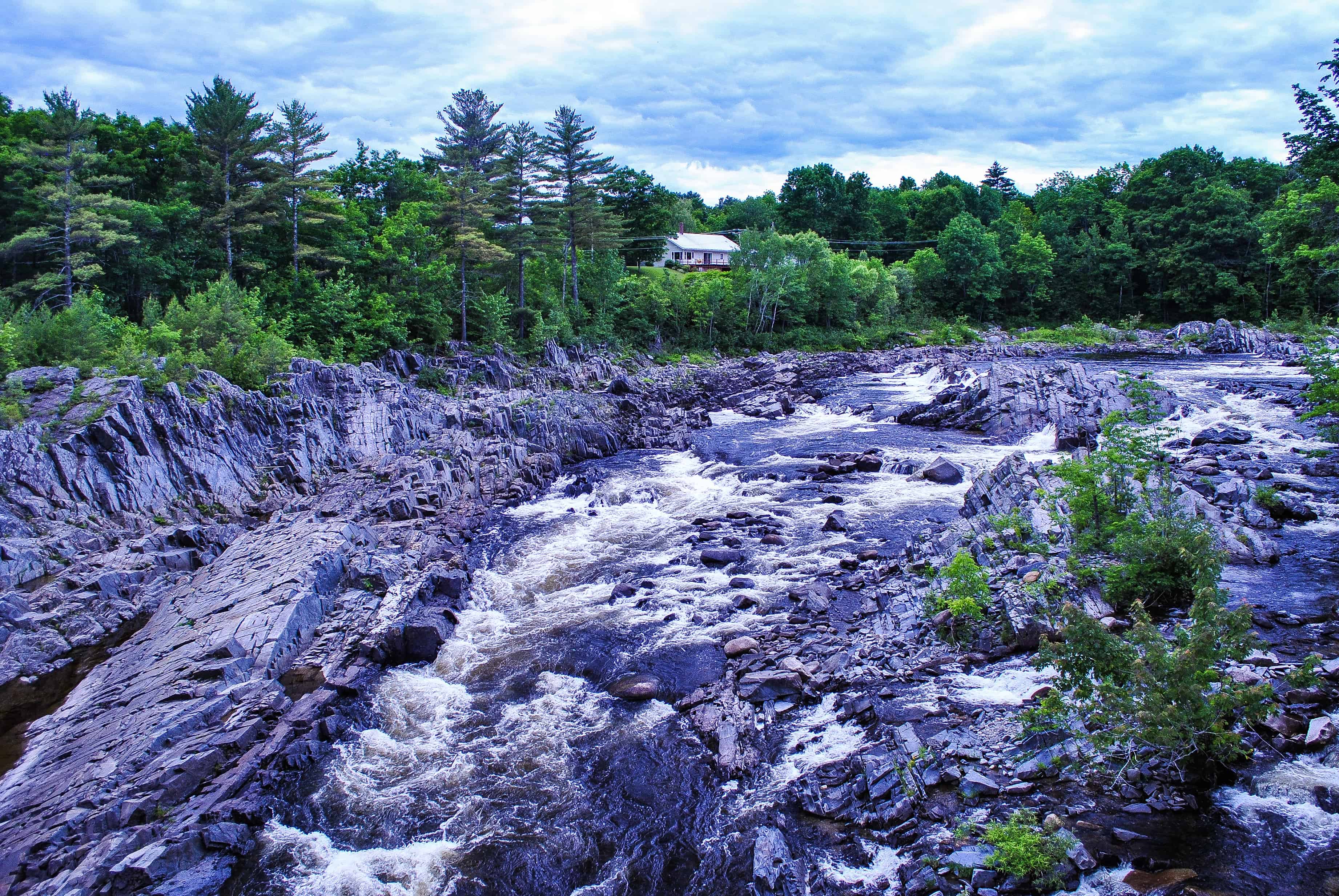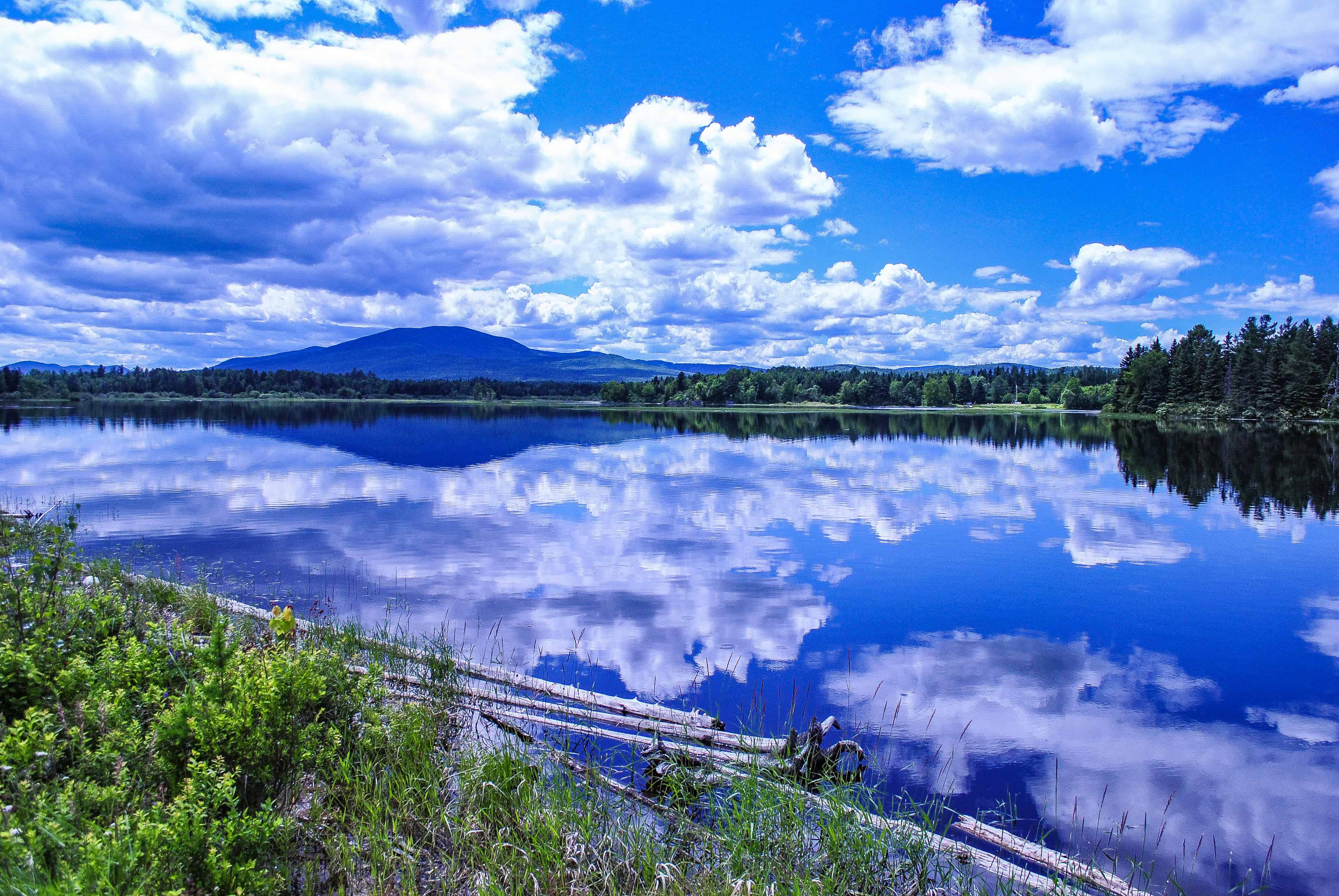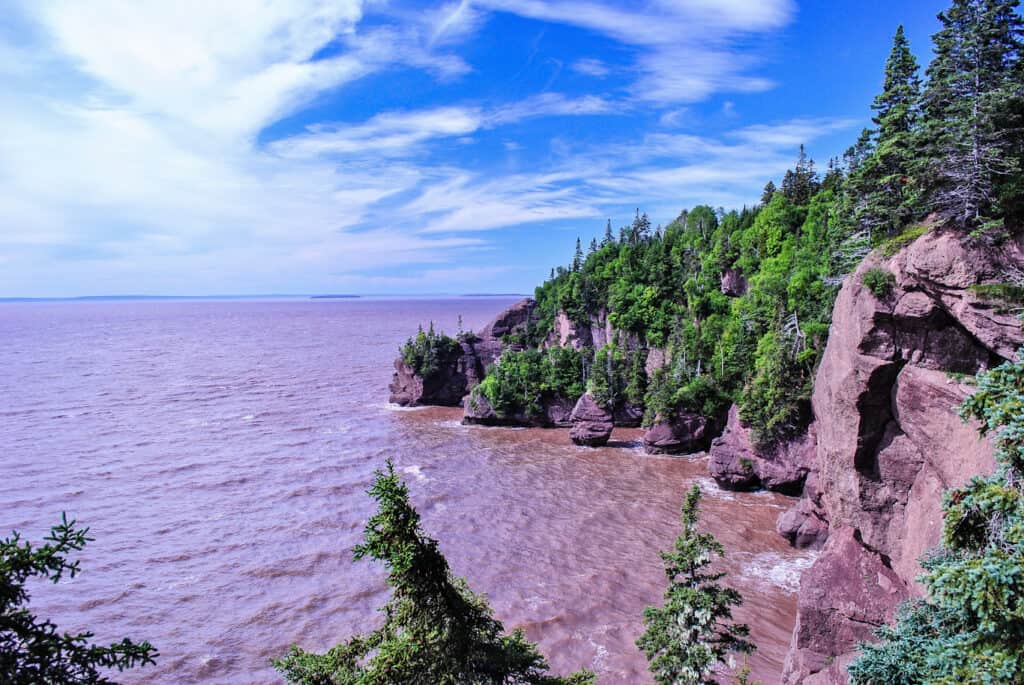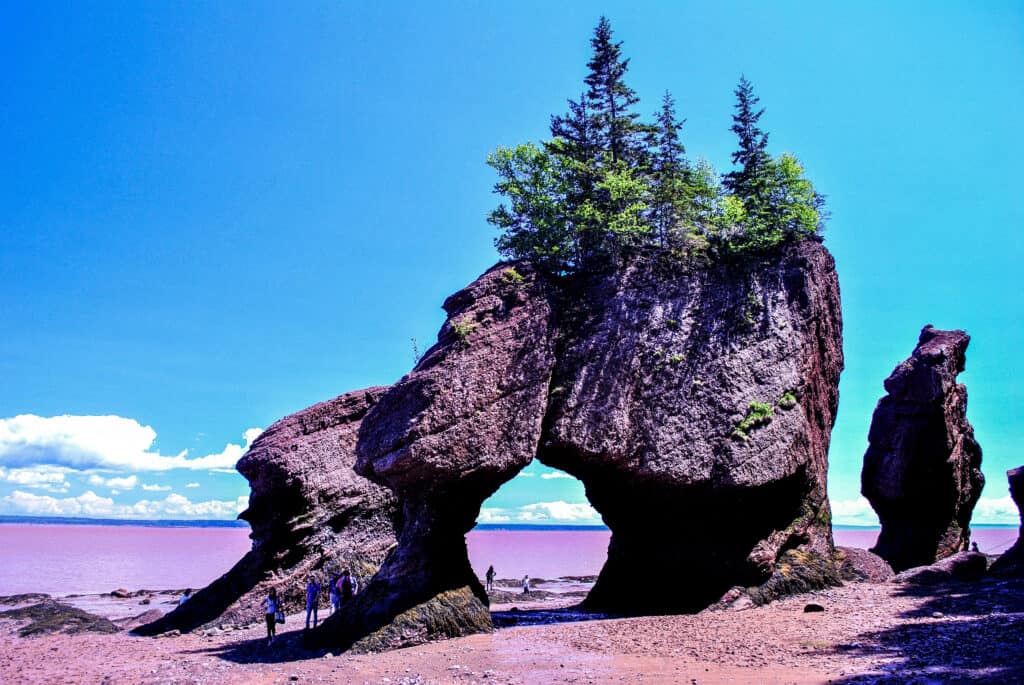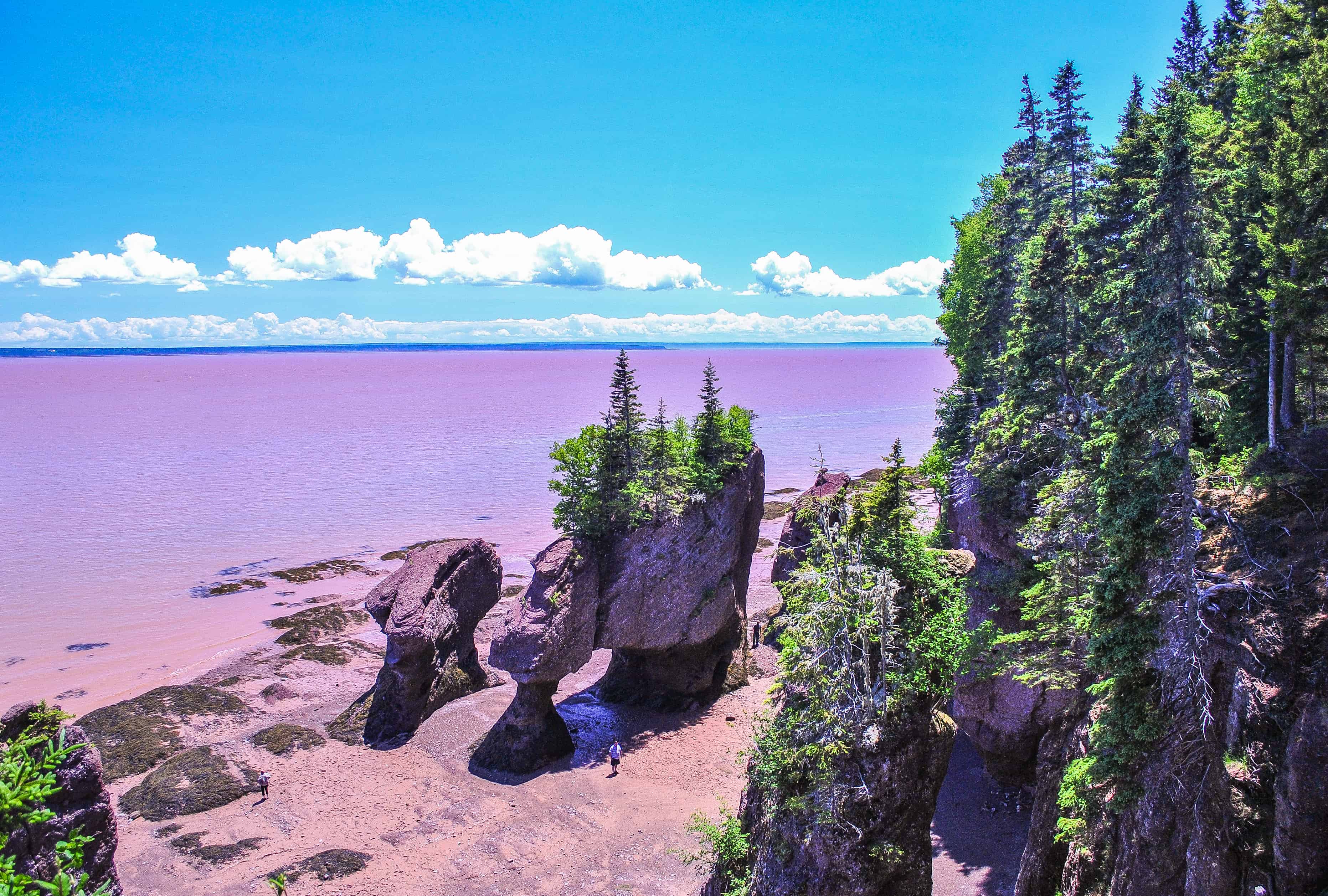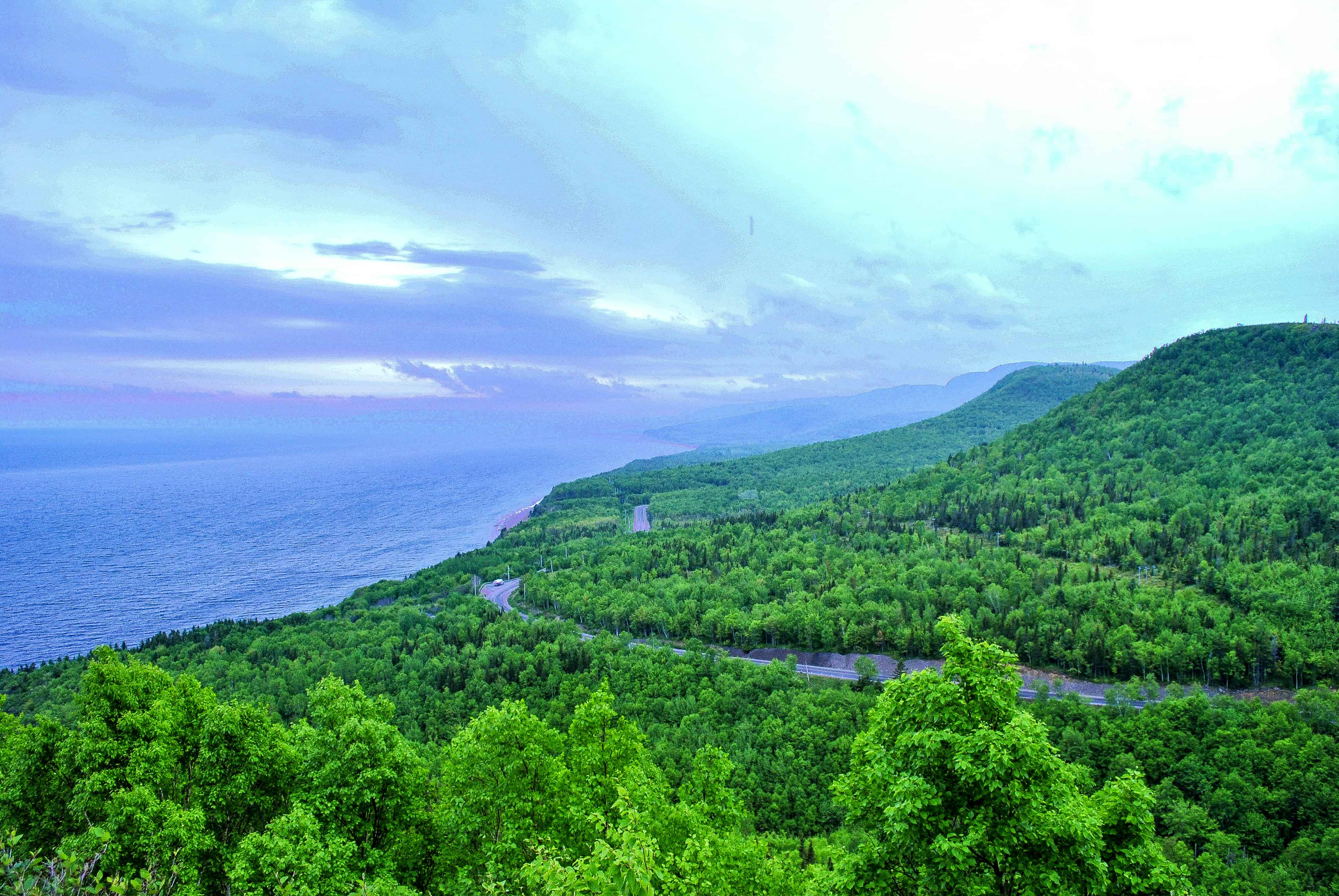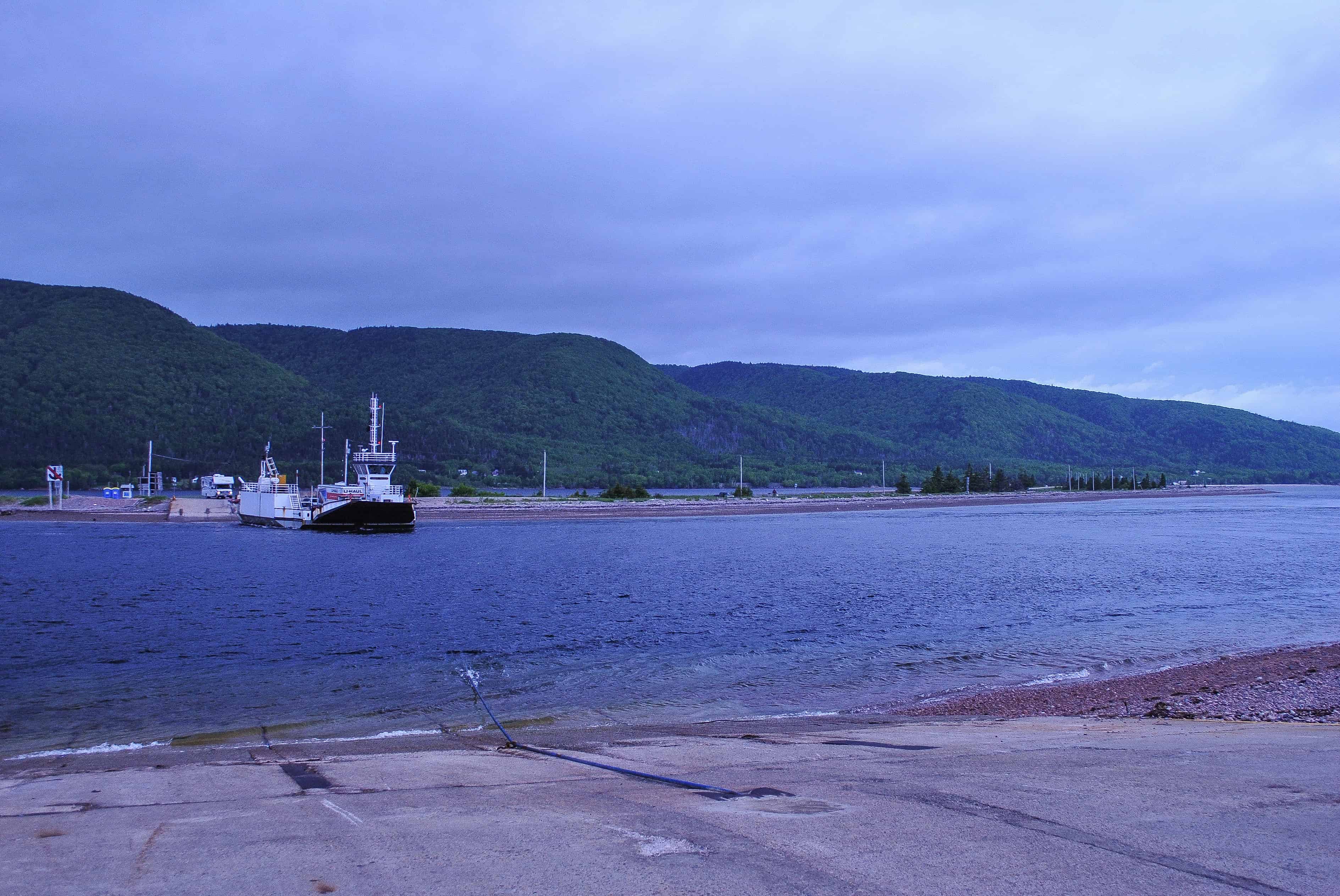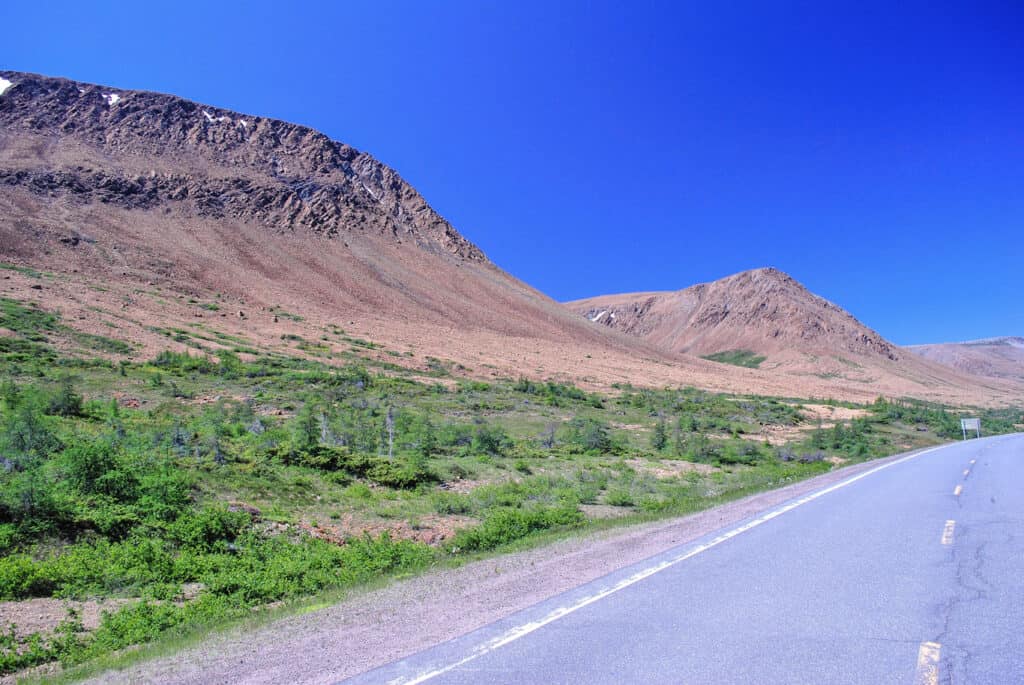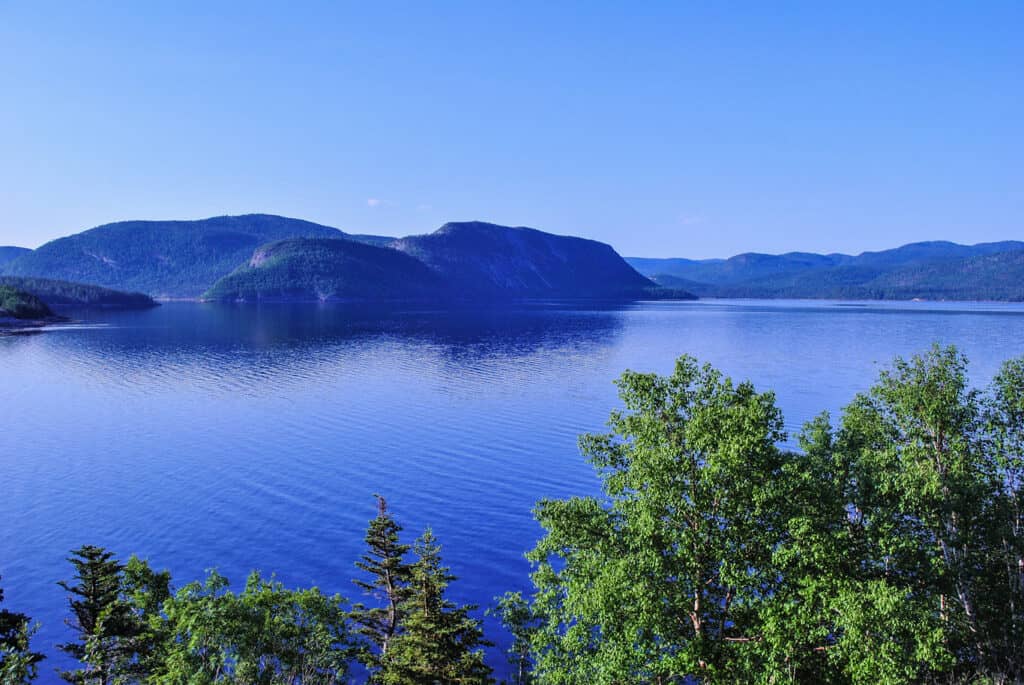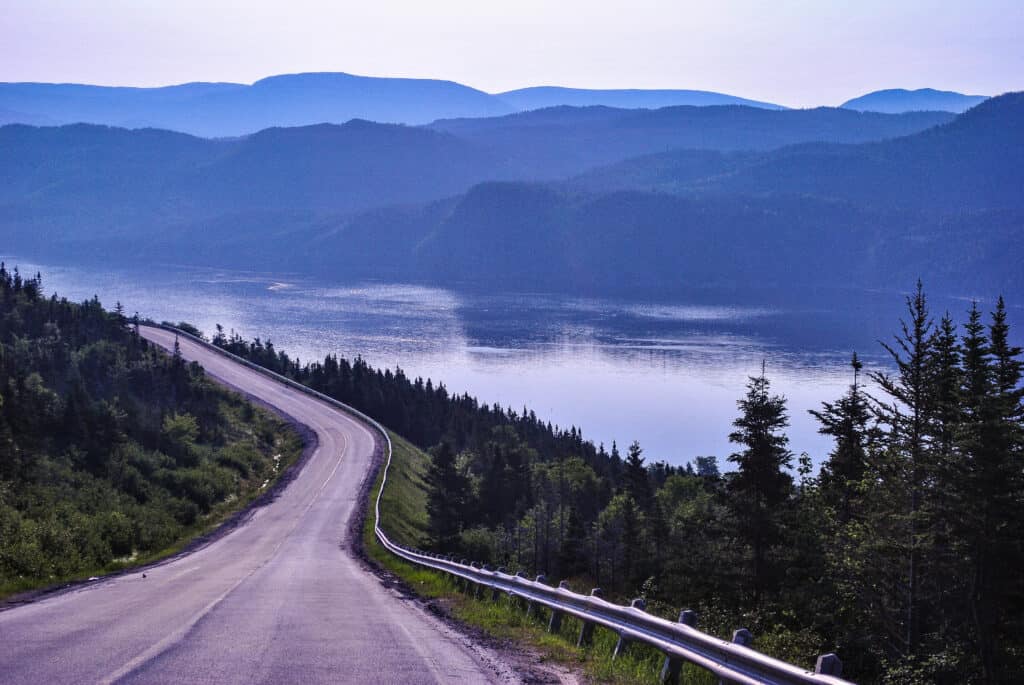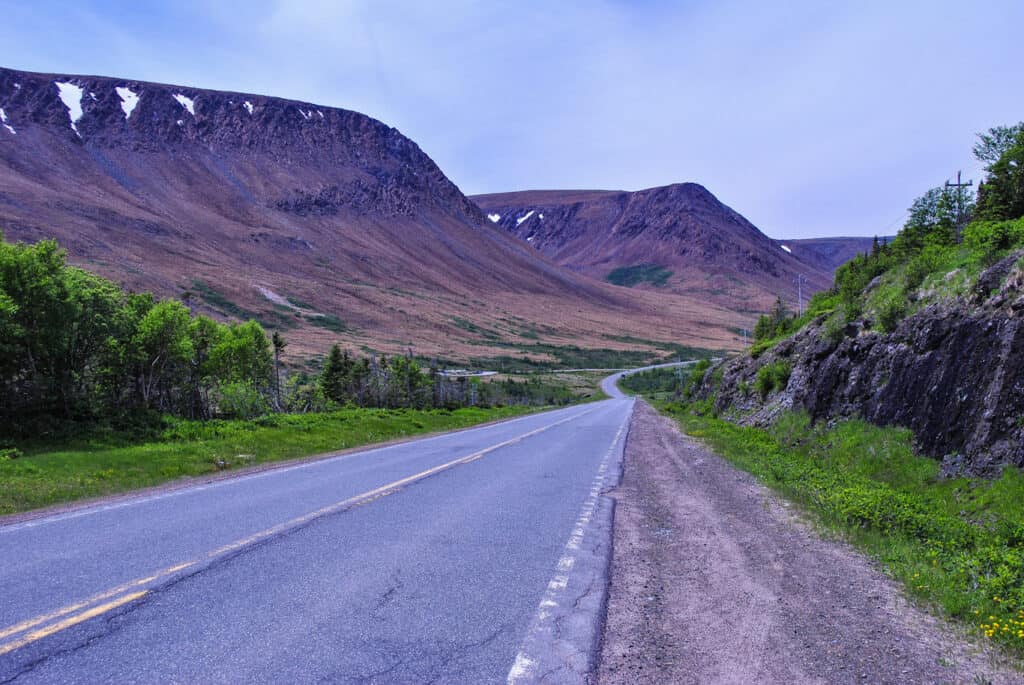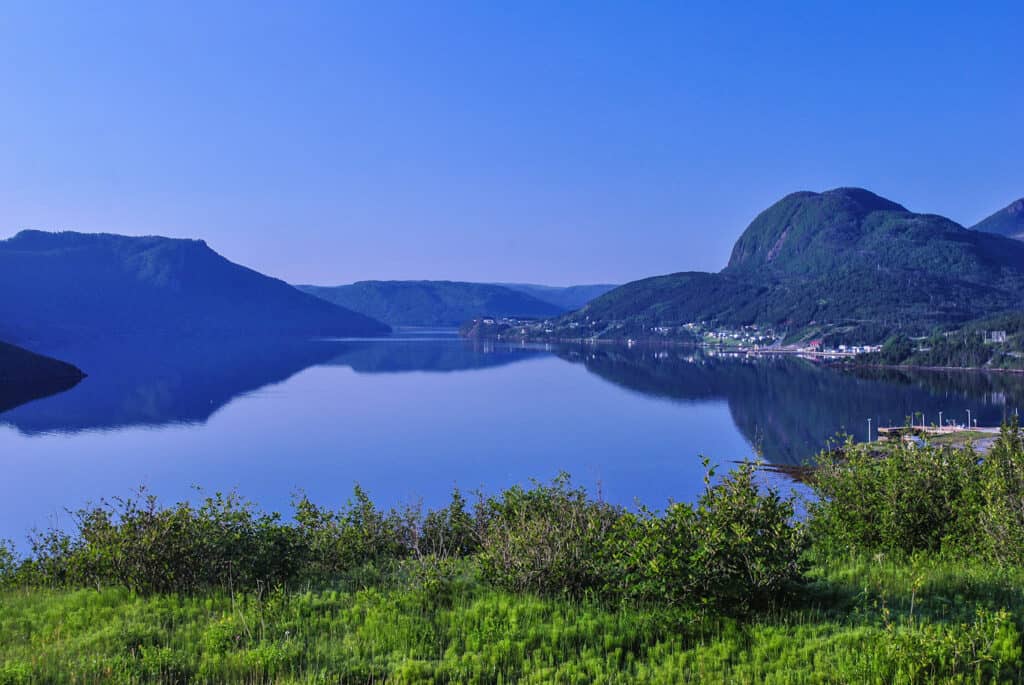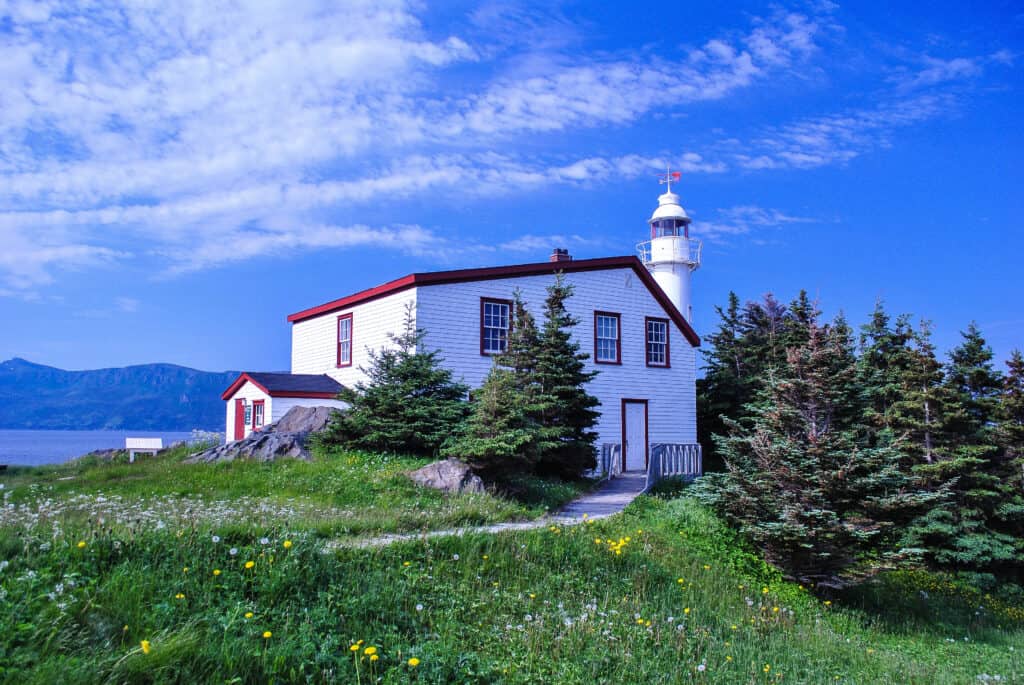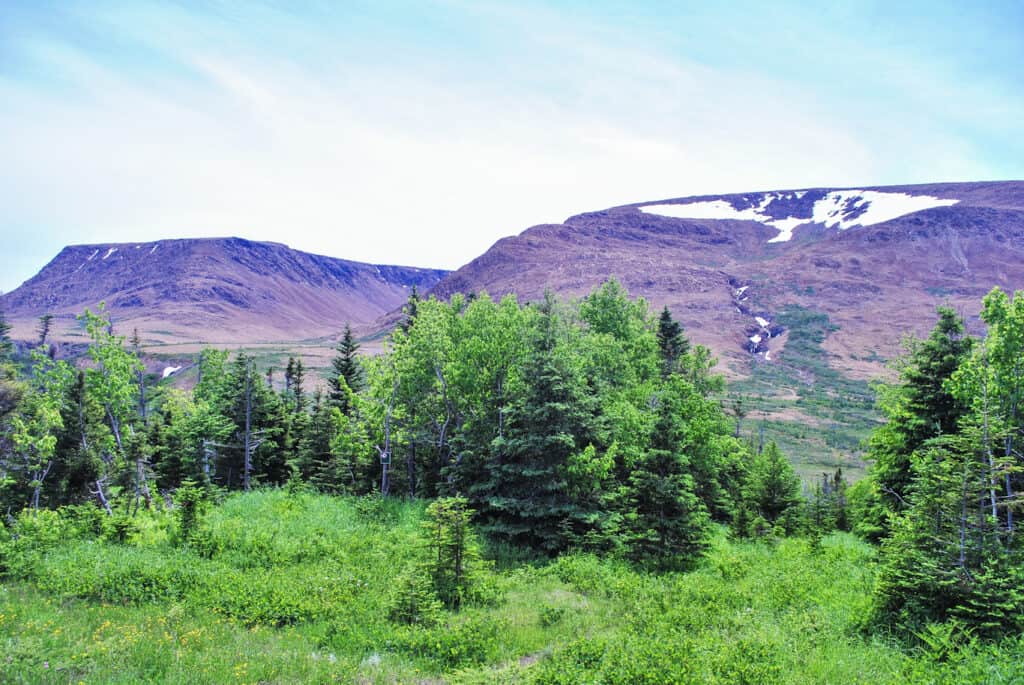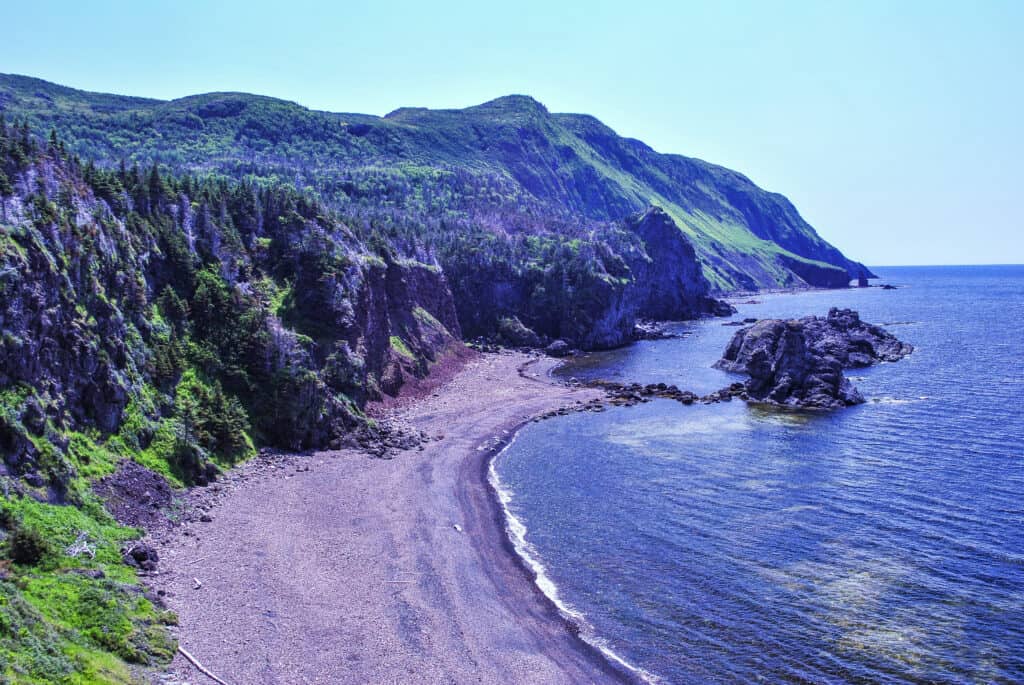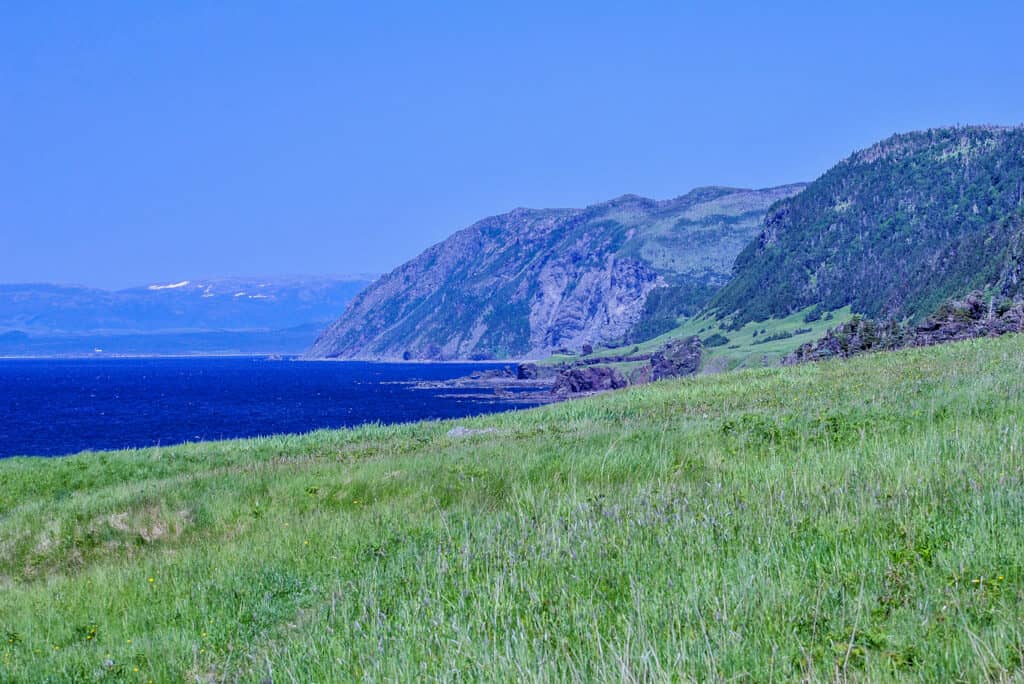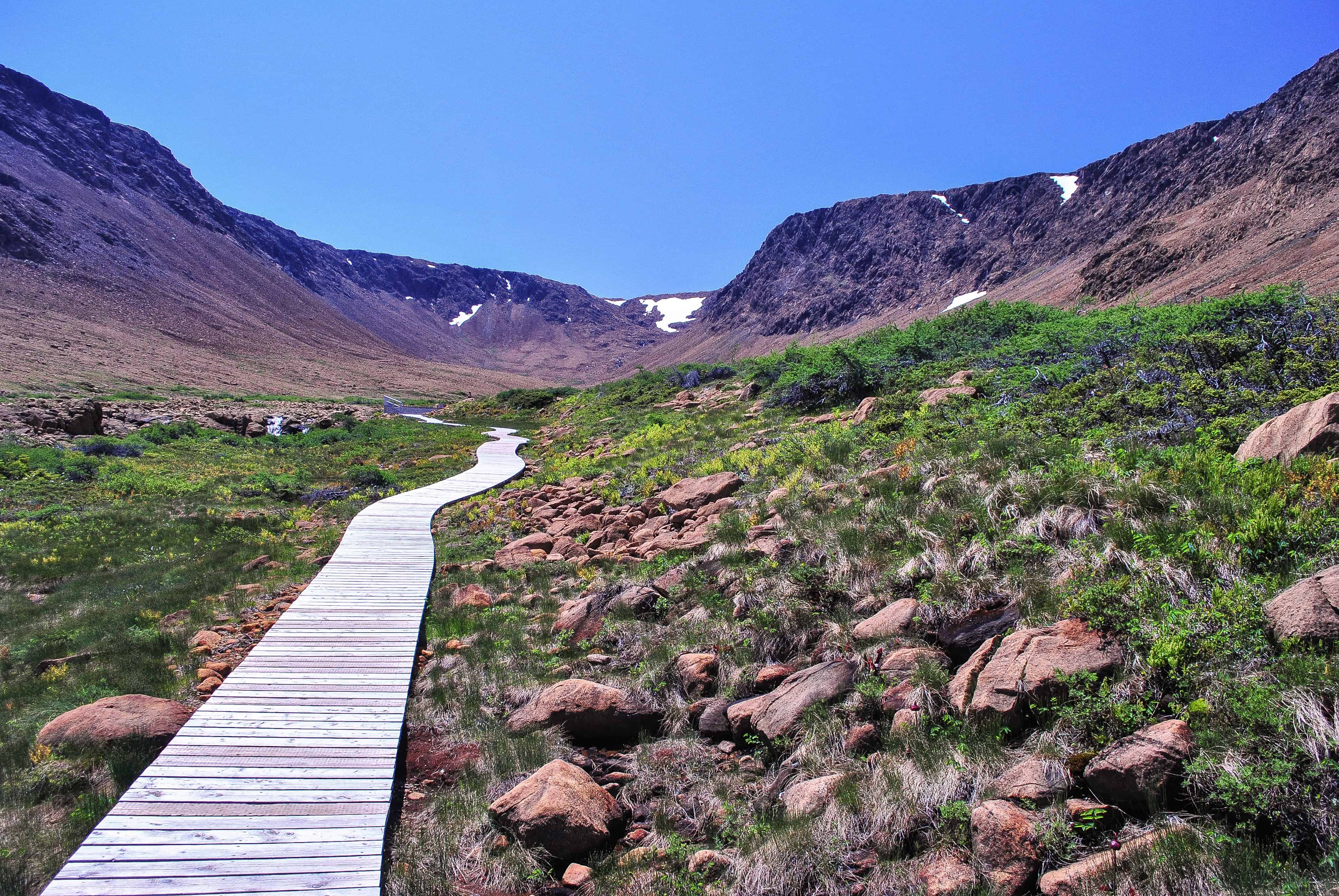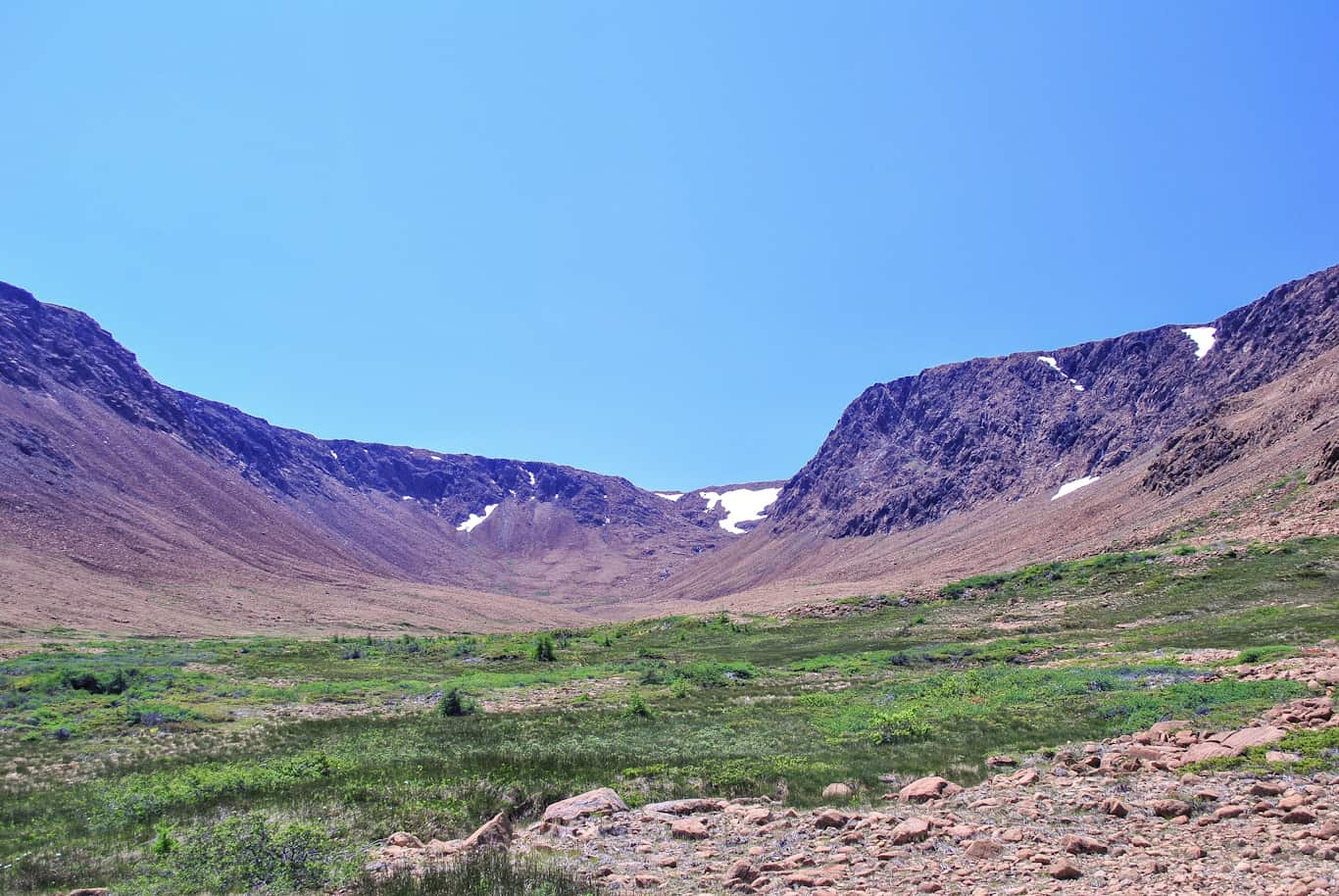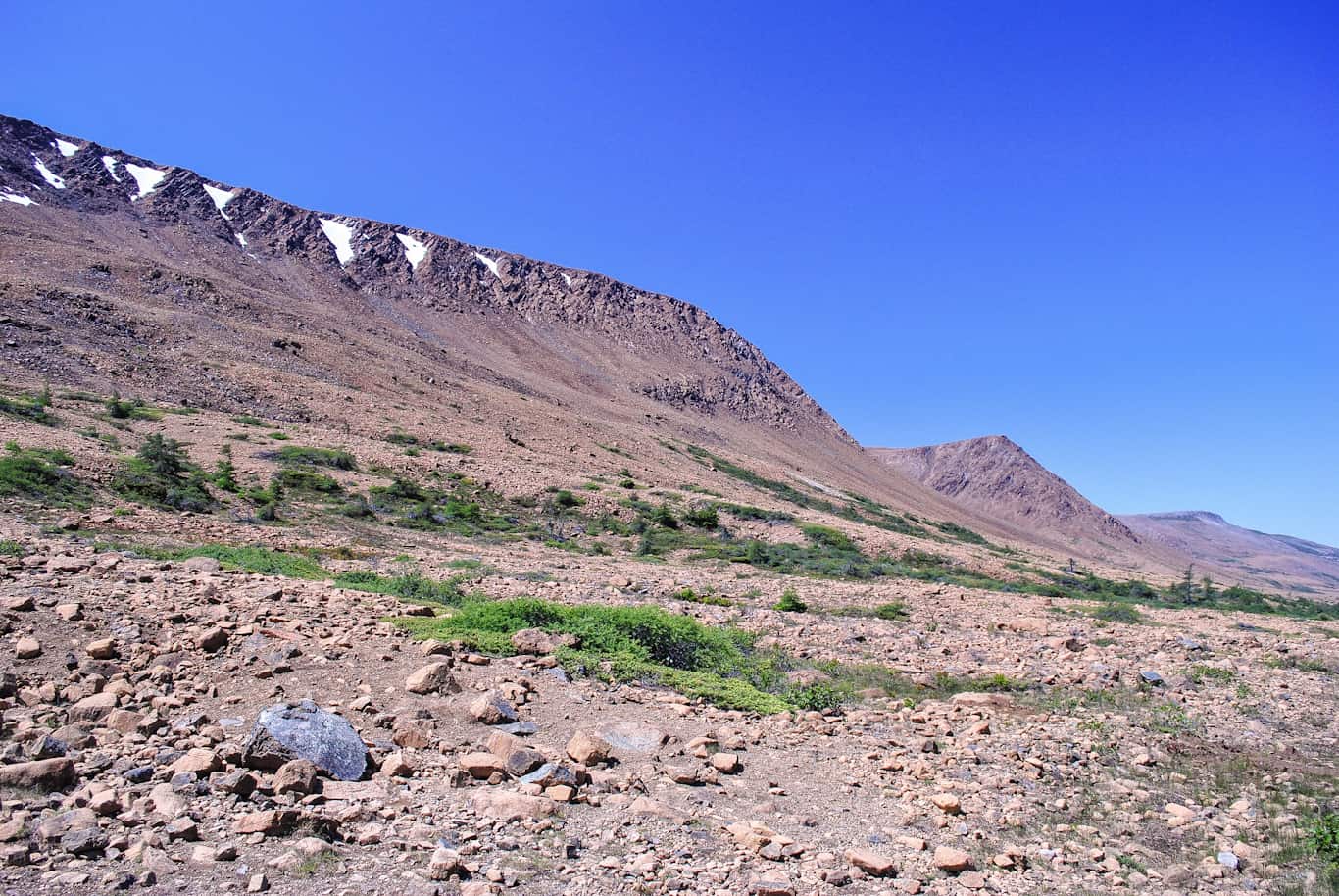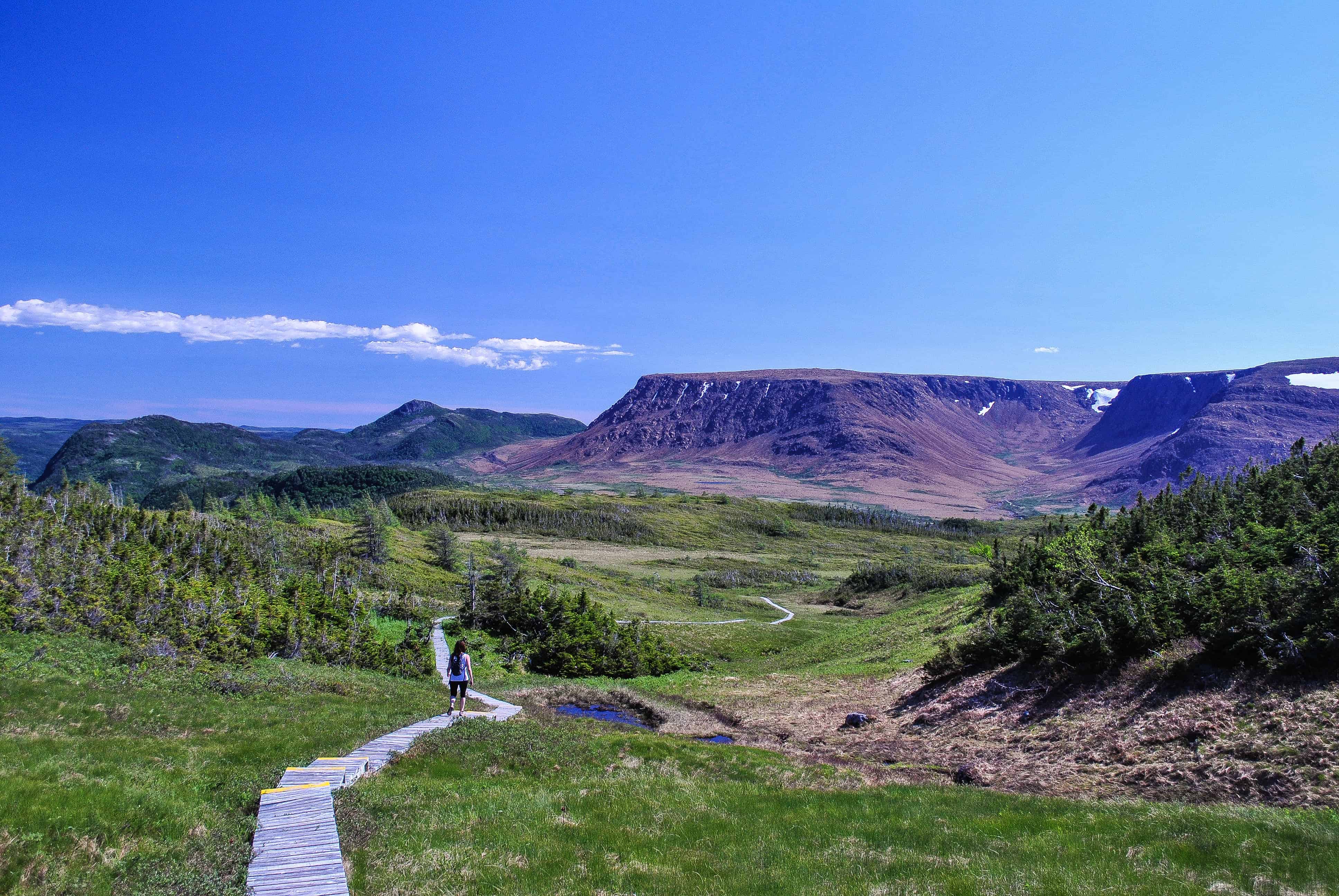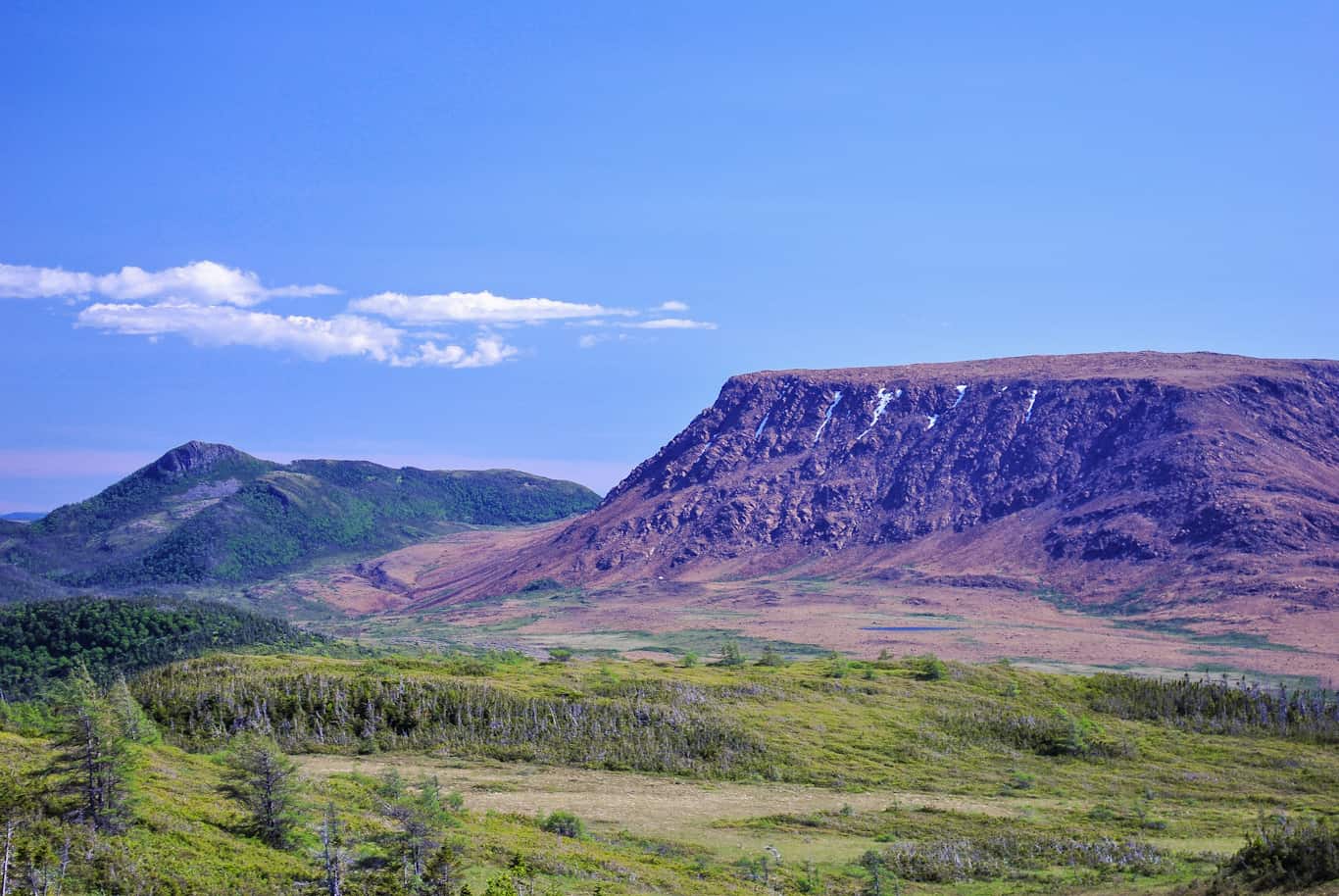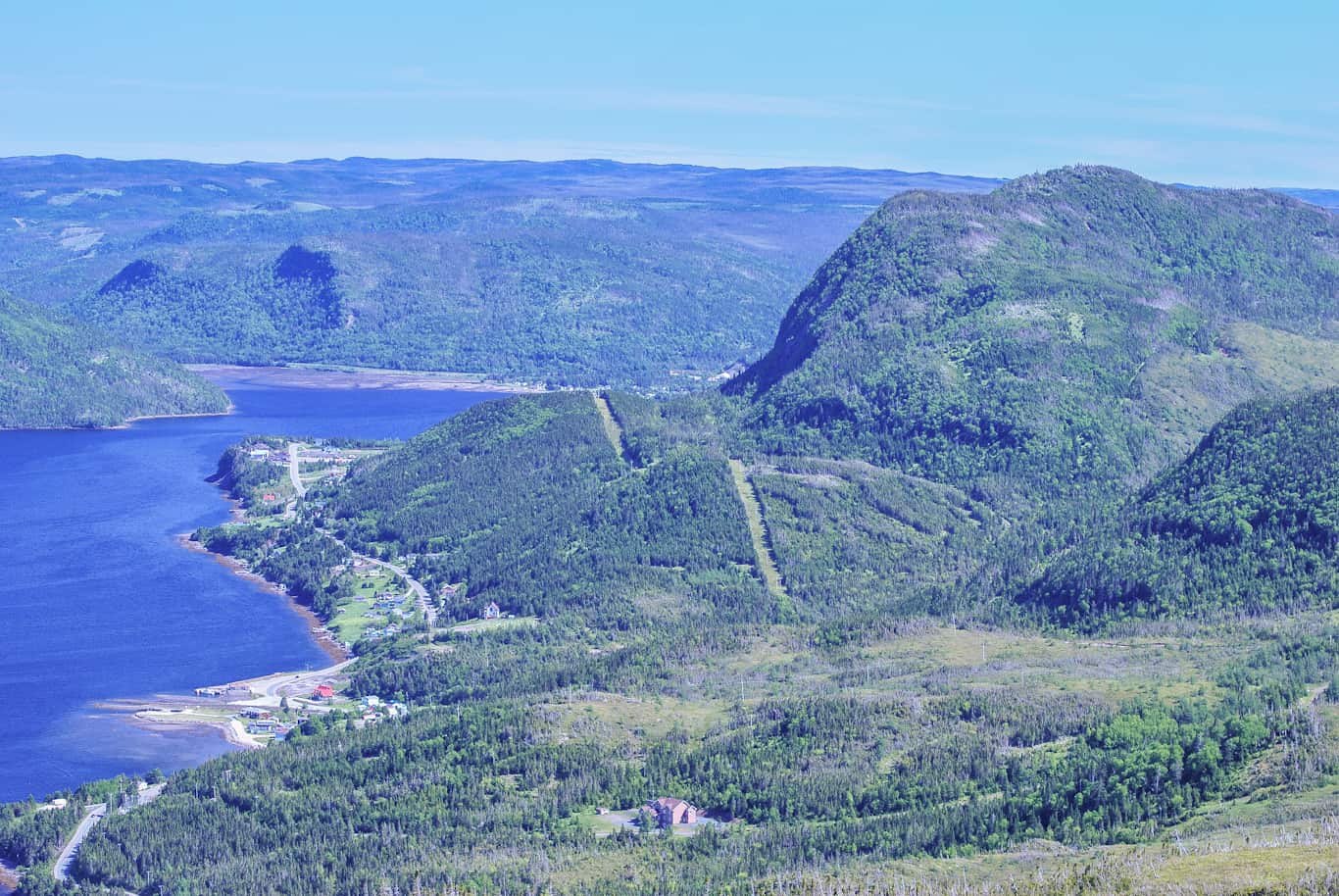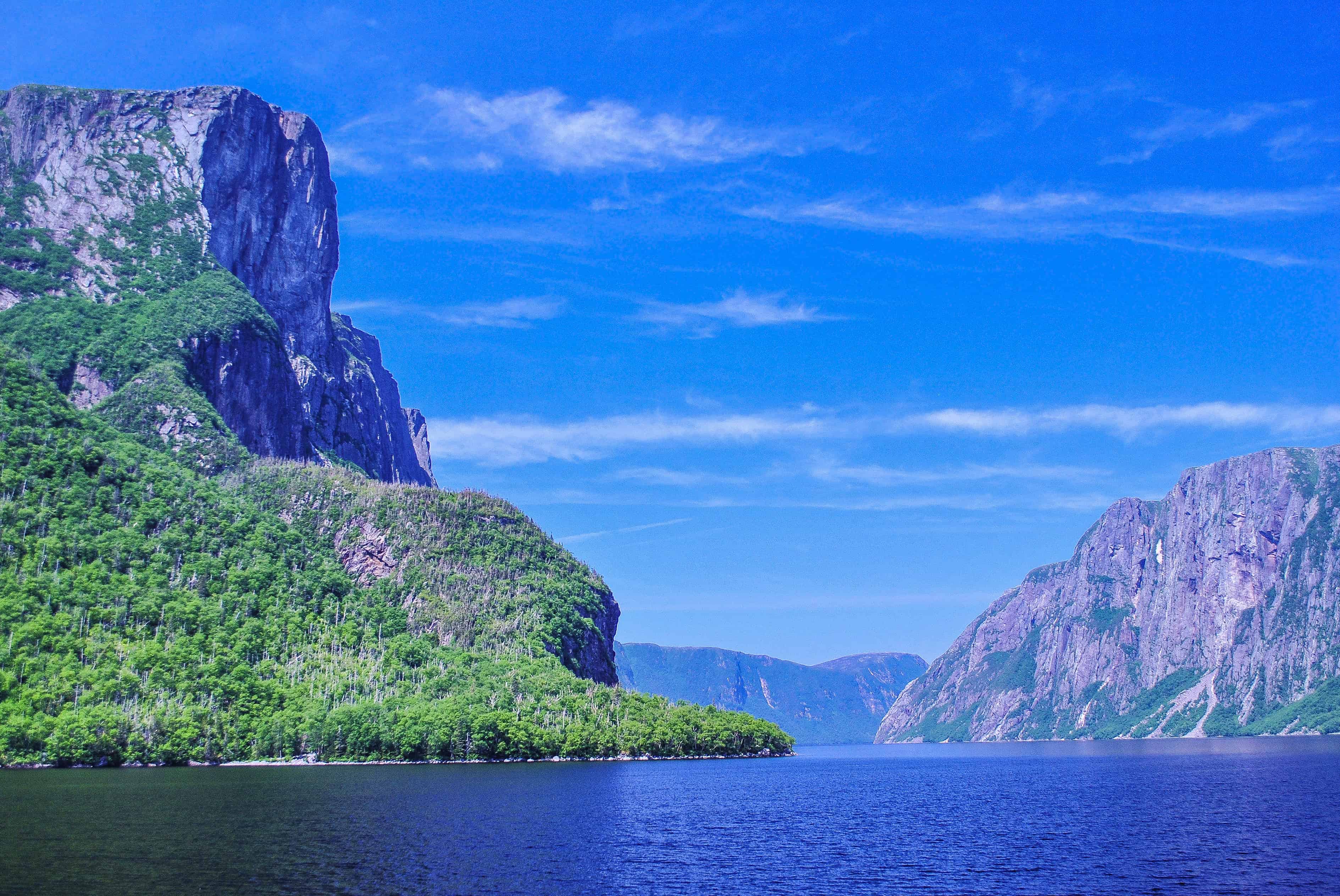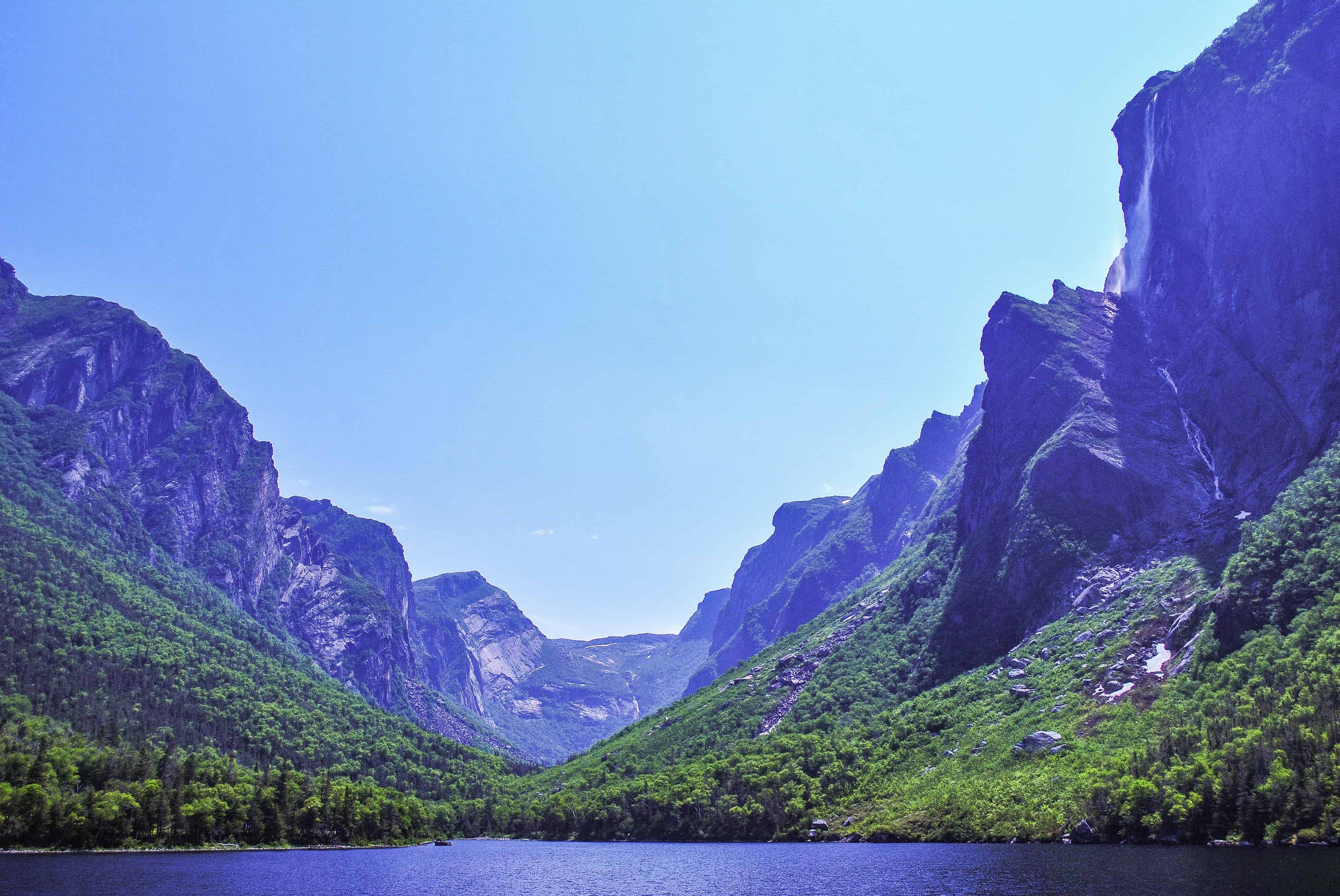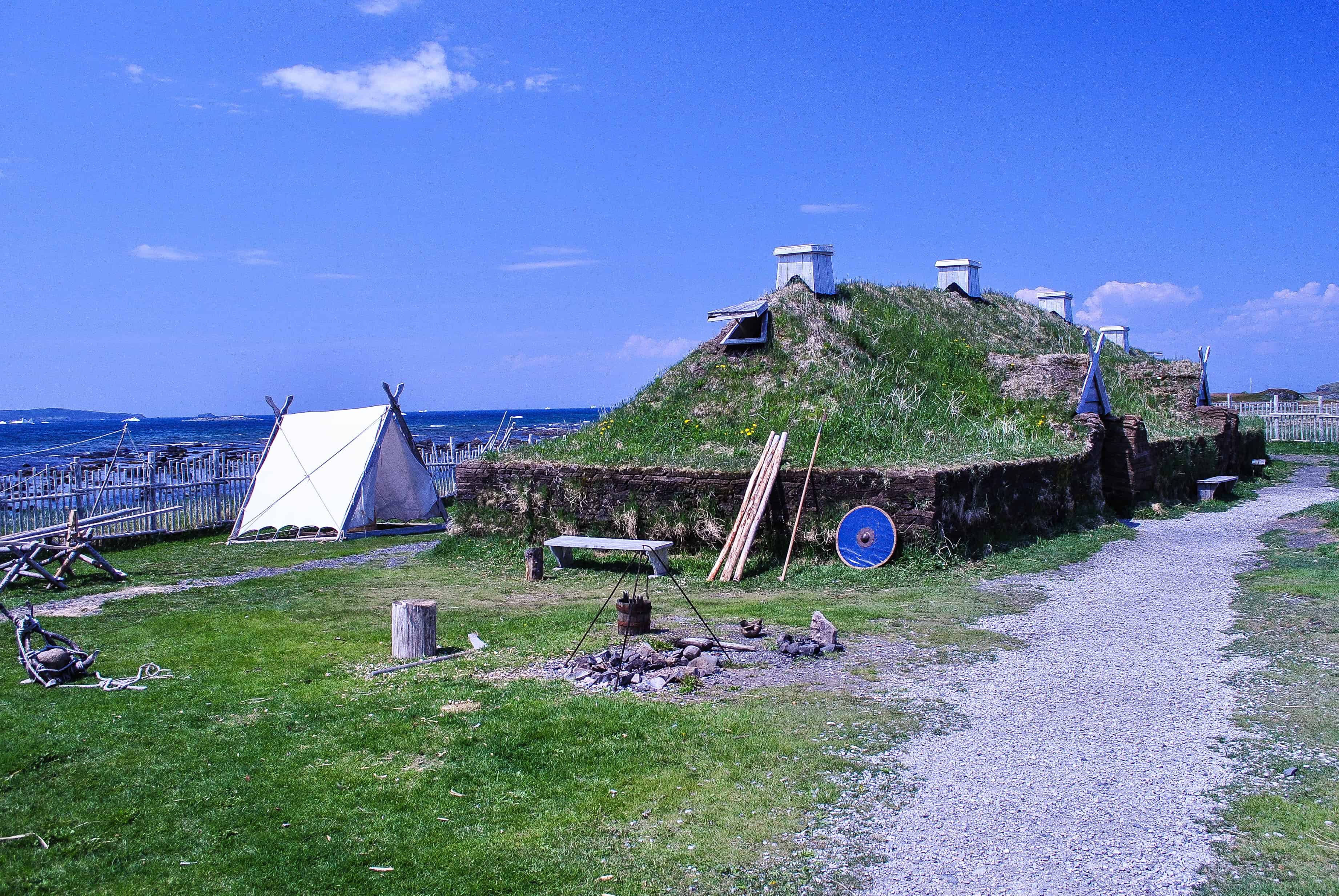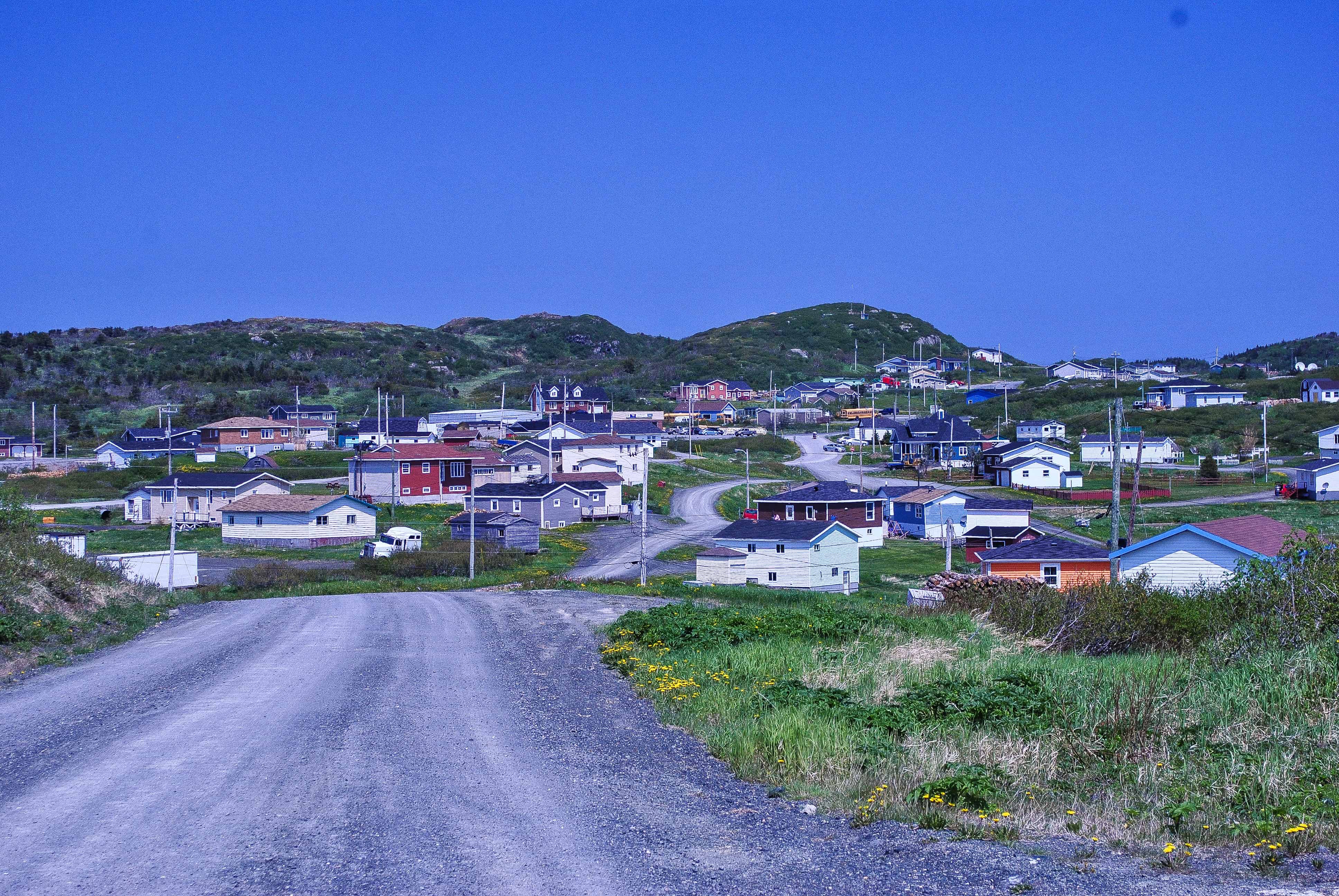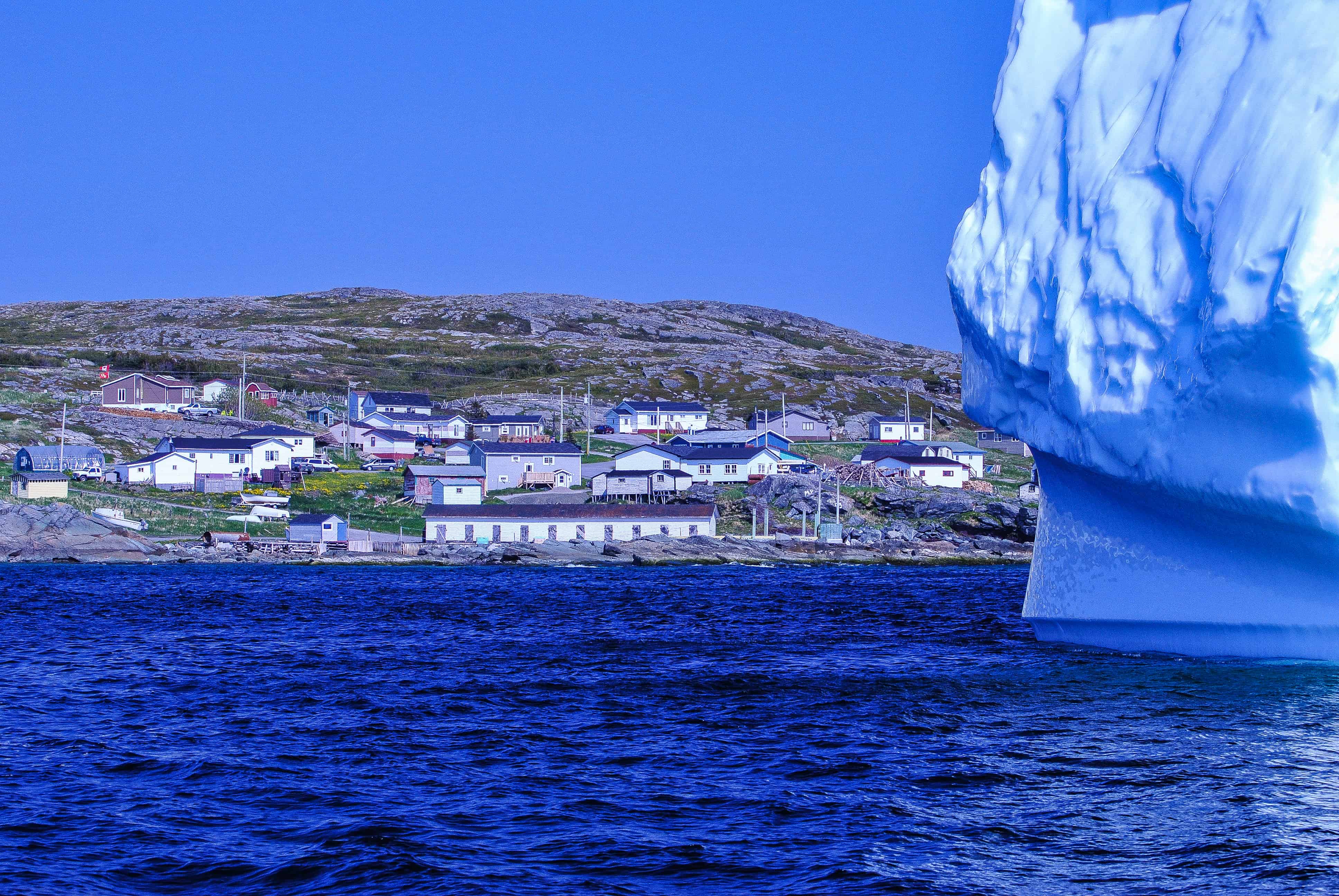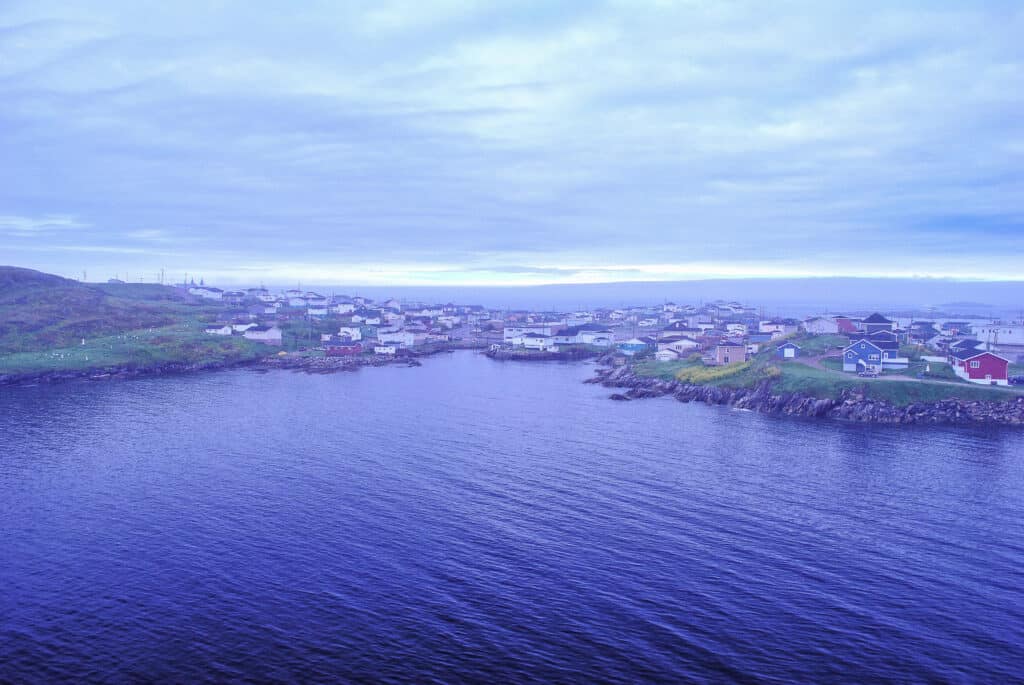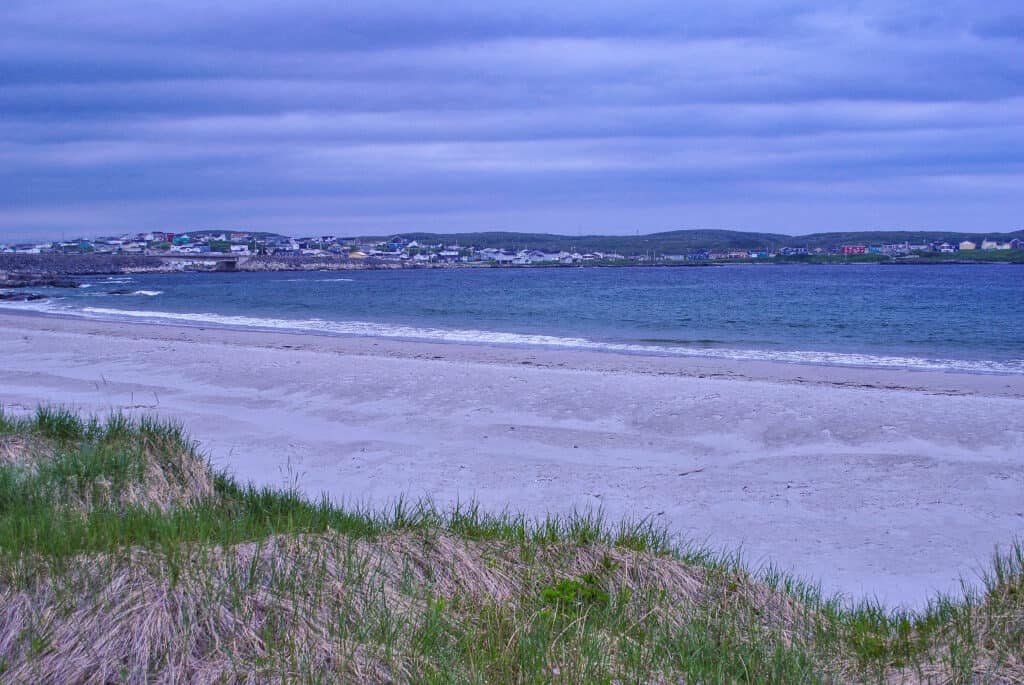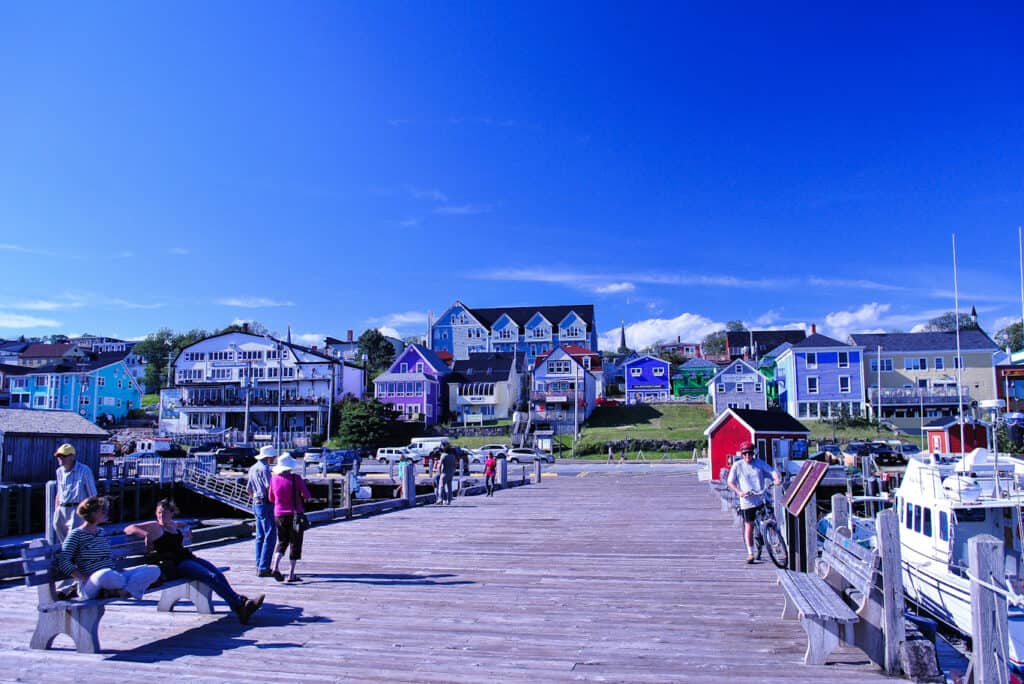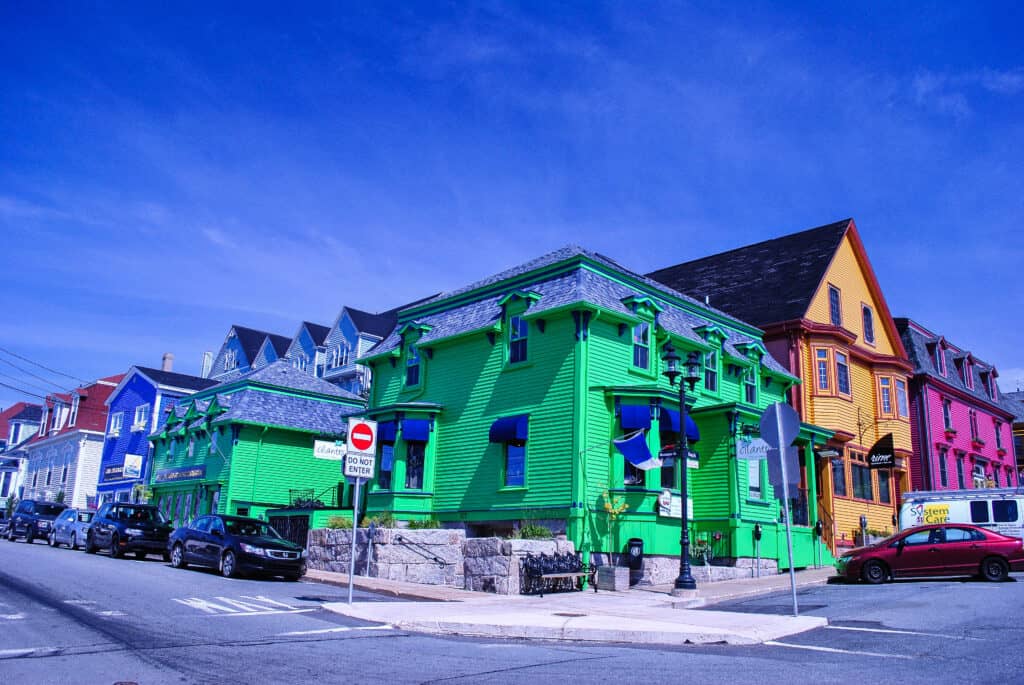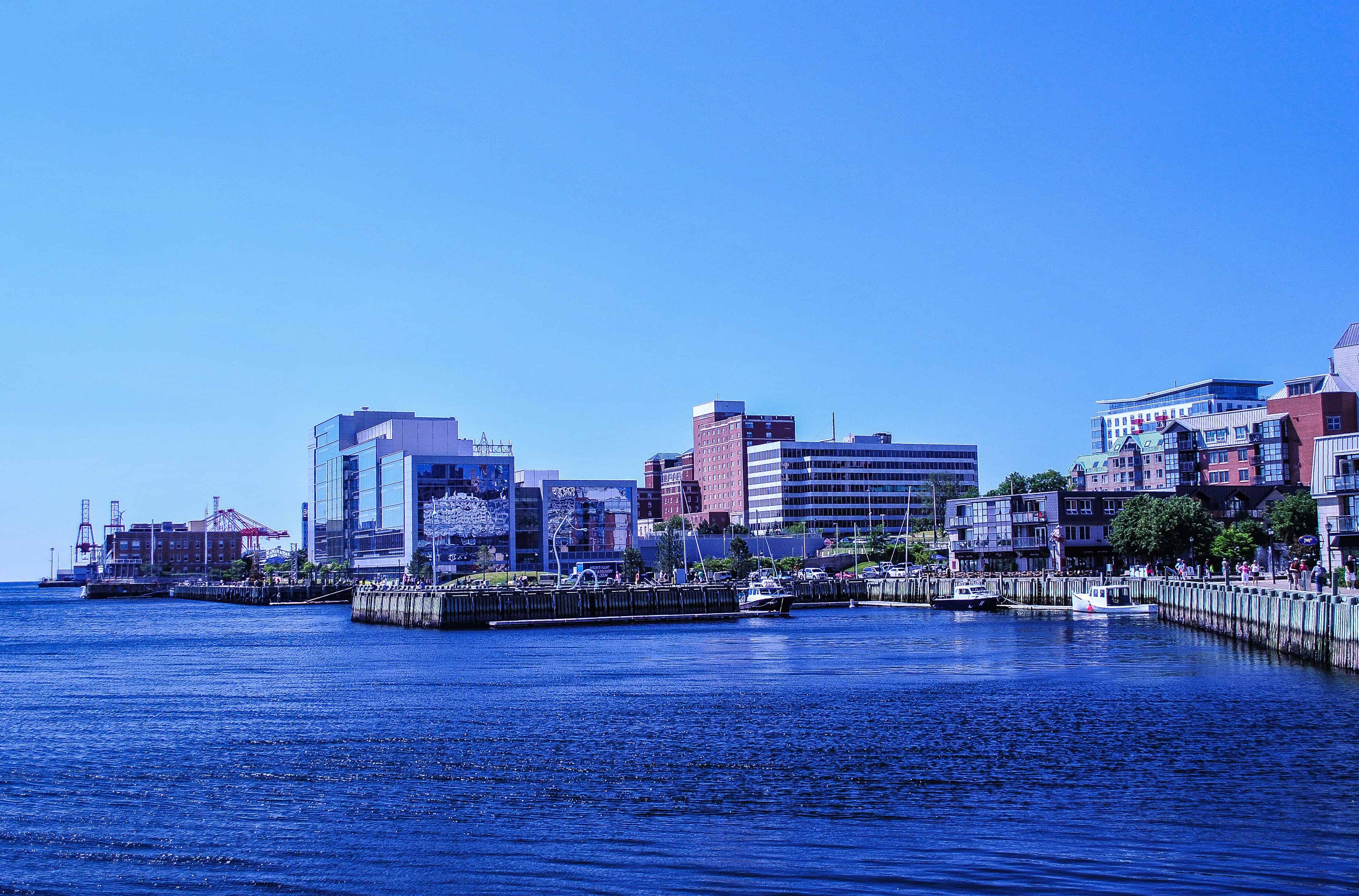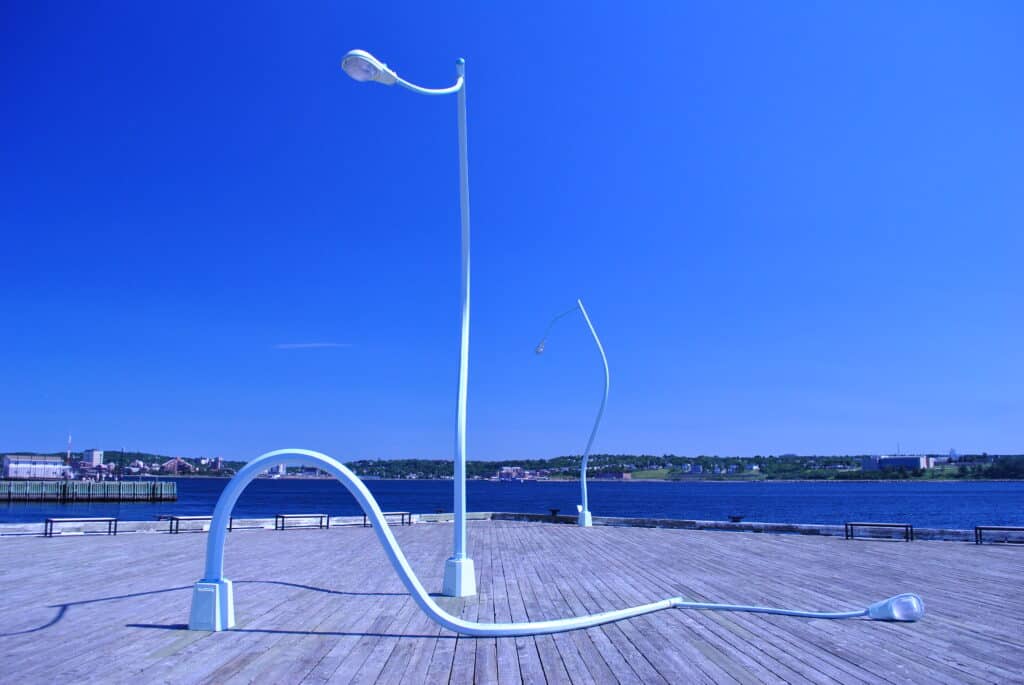Welcome to our Atlantic Canada Travel Guide Trip Highlights page, where we share our favourite Atlantic Canada sights, locations, and activities. Our trip highlights are presented in chronological order using a 3-star rating system, where a three-star rating indicates our favourite must-see sights and must-do activities.
Other pages in this section (Atlantic Canada):
Driving through rural Maine, USA *
We don’t think we have the pictures to capture all the beautiful landscapes and towns that we crossed during this portion of the road trip. But we did force ourselves once in a while to stop and take some pictures.
Witnessing the powerful tides around the Hopewell Rocks area, New Brunswick**
This is the perfect example of a picture being worth a thousand words (see below). Here, the tide significantly affects the visitable areas of the coast/beach that can be reached. Although the rock formations are spectacular, the effect of the tide on the water levels was simply mesmerizing.
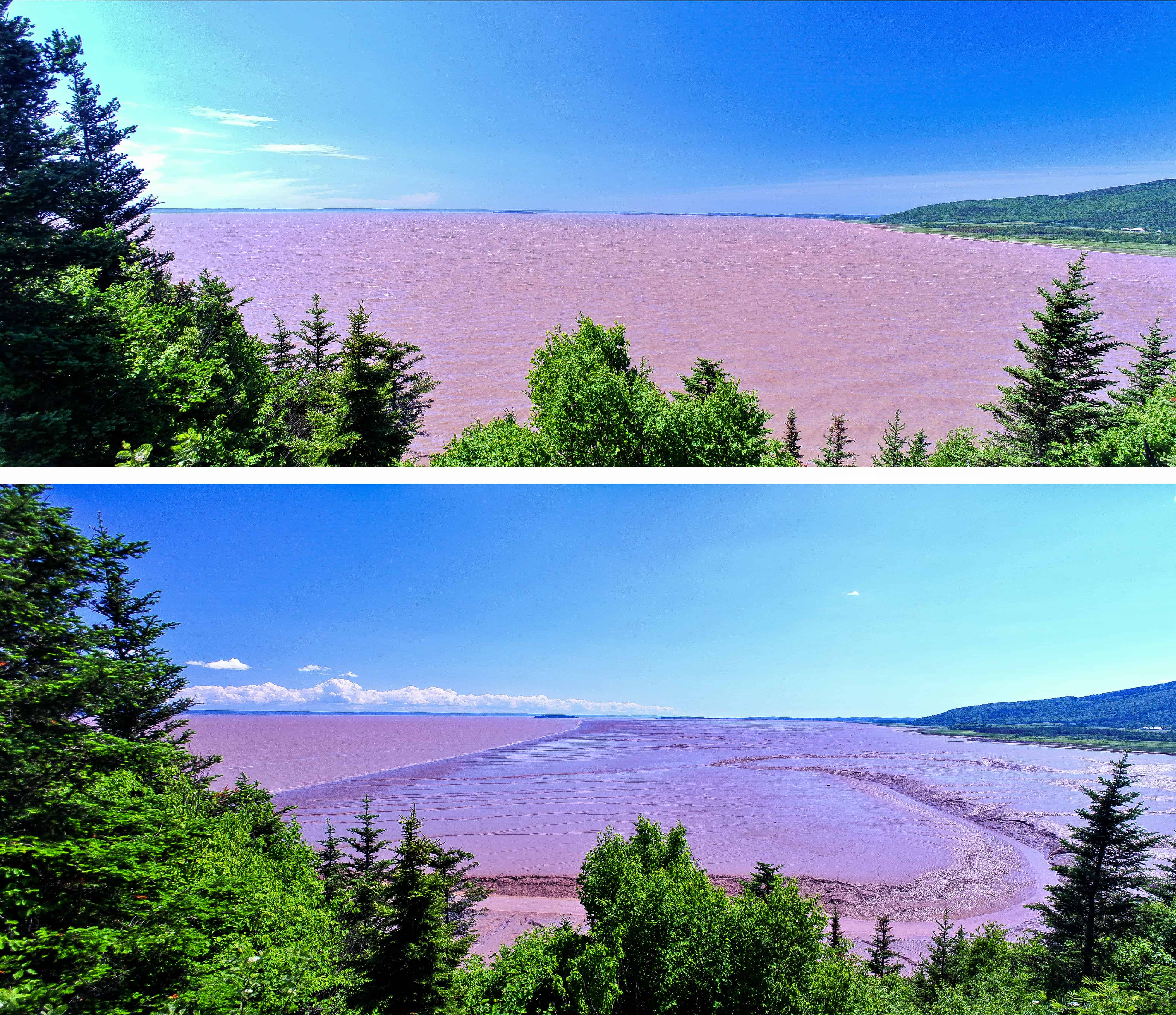
Some fun tidal facts: The tidal range in the Bay of Fundy is about 13 m (43 ft) – the average tidal range worldwide is about one metre (3 ft 3 in). Because of tidal resonance in the funnel-shaped bay, the tides that flow through the channel are very powerful. In one 12 hrs tidal cycle, about 100 billion tons of water flow in and out of the bay, which is twice as much as the combined total flow of all the rivers of the world over the same period.
Driving through Nova Scotia and Cape Breton Highlands National Park **
If there was one part of the trip we would like to revisit, this would be it. Cape Breton Highlands National Park (NP) was spectacular and we wish we could have spent more time here (more than the 3 hr quick loop we took). The NP is on Cape Breton Island, where the Cabot Trail scenic highway lines the mountainous coastline and offers sweeping ocean views.
A unique part of the trip up to Cape Breton (from Sydney) is going across the mouth of St. Ann’s Bay. To do so, you need to take the Englishtown Ferry, a cable ferry that carries route 312. The ferry route runs 24 hrs a day, on-demand, and takes only a few minutes to cross the 125 m (410 ft) wide channel, which has to be one of the shortest ferry rides ever!
Driving through Gros Morne National Park ***
If you enjoy open roads surrounded by beautiful landscapes, then this is the place for you. A UNESCO World Heritage Site – the National Park is is a land of fjords and lakes carved out by glaciers, towering cliffs and rocky coastlines, unspoiled mountain wilderness and sandy beaches, all interconnected by several tiny and quaint coastline communities totalling less than 4000 inhabitants. You’ll have your work cut out for when having to decide whether you prefer the Park’s southern or northern arm!
The road between Woody Point and Trout River (scenic road 431) taking you through the southern arm of the park is truly one of the most spectacular you’ll see. What strikes you most is the contrast of colour between the mountains that tower above you. One side is lush green; the other, a brilliant, amber colour – all divided, it would seem, by the yellow line of the highway.
The various hiking trails in Gros Morne National Park ***
The top highlight of our trip was definitely visiting this National Park. This is the perfect example of what national parks should be: beautiful landscapes with a minimal amount of tourists present. Dig deeper, and you find lovely trails, picturesque fjords and landscapes definitely worthy of your time. With over 100 km of trails, the UNESCO World Heritage Site Gros Morne National Park (NP) has a great variety of hiking trails, both in length (ranging from 1km to 14km) and in jam-dropping scenery (majestic fjords, cascading waterfalls, towering cliffs, alpine highland tablelands and wandering coastal pathways).
A complete list of trails and a detailed map are available.
Here’s a short list of our favourite trails:
- Green Gardens Trail (9 km return; 3-4 hrs) – Much of this popular trail takes you along the coastal shoreline where you can view sea stacks, coves, beaches and sea caves. The trail begins on the barren Tablelands before taking you through the boreal forest and patches of wildflower meadows
- Tableland Trail (4 km return; 1 hr) – This short trail follows an old roadbed as it skirts the base of the mountain. The trail ends with broad panoramic views in the glacially carved Winter House Brook Canyon.
- Lookout Trail (5 km return; 2 hrs) – This trail gets steep quickly as you climb steadily through the forest, but the views from the top are stunning as you emerge from the trees onto a highland plateau.
- Lobster Cove Head Trail (2 km; 30min) – This lovely short hike takes you out to the Lobster Cove Head lighthouse situated on the point overlooking Rocky Harbour.
- Trout River Pond Trail (14 km; 3-4hrs) – We hesitated including this trail because it was pretty muddy when we did it, but in hindsight we believe it still provided a very interesting hike. Most of it is through shaded forest while it skirts the north side of Trout River Pond, and then onto the barren, desert-like Tablelands. The trail ends where two ponds meet in a steep-sided valley that was formed by glacial erosion.
Finally, we also think it’s worth looking into the 2 hrs boat tour through the Western Brook Pond fjord as the views are simply stunning. Note that from the parking lot there is a 45-60min walk (3 km) to the dock – this is in fact one of Gros Morne’s 20 official hiking trails.
Visiting Anse-aux-meadows, the site of the first Viking settlement in North America *
L’Anse-aux-Meadows is an archaeological site on the northernmost tip of the island of Newfoundland. Archaeological evidence of a Norse presence was discovered at L’Anse-aux-Meadows in the 1960s, and it is currently the only confirmed Norse or Viking site in North America, outside of the settlements found in Greenland. You can find here the excavated remains of an 11th-century Viking settlement with wood-framed peat-turf buildings that are similar to those found in Norse Greenland and Iceland. The original remains are somewhat underwhelming to look at, but the restored versions of the buildings are interesting to walk around and visit.
Witnessing Iceberg Alley in St-Anthony, Newfoundland **
The period from late May until late June is the prime season to witness Icebergs flow by Newfoundland’s northwestern tip, in what is known as Iceberg Alley. The bergs are visible from many points along the coast, come in many different shapes and sizes, and range from snow-white to a deep aquamarine. We took a fantastic boat tour to get closer to some of these glacial giants (see pics below), while also being able to catch some dolphin and whale sightings along the way. A quick drive south of St-Anthony to Goose Cove can provide you with some picturesque views of a quaint rural seaside town.
Walking around Port-aux-Basques, Newfoundland’s entry port from the south *
Port-aux-Basques, a lovely small town full of colourful houses, is where the ferry docks from North Sydney. One of the newer attractions in Port-aux-Basques is the Grand Bay West Beach Trailway. The trail begins with an elevated boardwalk offering panoramic views of Grand Bay West and ends with a picturesque stroll along a sandy beach.
Note that if you are arriving in the morning make sure you grab breakfast on the ferry. Since you are disembarking shortly after 7 a.m., there are not a lot of breakfast options or other services open in the town.
The picturesque town of Lunenburg, Nova Scotia **
Although quick to visit, the town of Lunenburg doesn’t lack stunning visuals. It is one of only two North American urban communities designated a UNESCO World Heritage Site. This picturesque seaside town with a great waterfront is filled with colourful houses and delicious seafood restaurants. While in town, check out the Lunenburg Academy, which is the only 19th-century academy building still intact in Nova Scotia.
Halifax Waterfront Boardwalk *
This is the perfect place to spend a lazy sunny afternoon. On one end you’ll find the Seaport Farmer’s Market and, on the other, the Halifax Casino. In between, you’ll come across several waterfront restaurants, museums and shops. While in town, you’ll probably also want to check out the Halifax Citadel and the Halifax Public Gardens, both within walking distance of the waterfront boardwalk.
< Back to Atlantic Canada Itinerary
Go to Practical Information >
